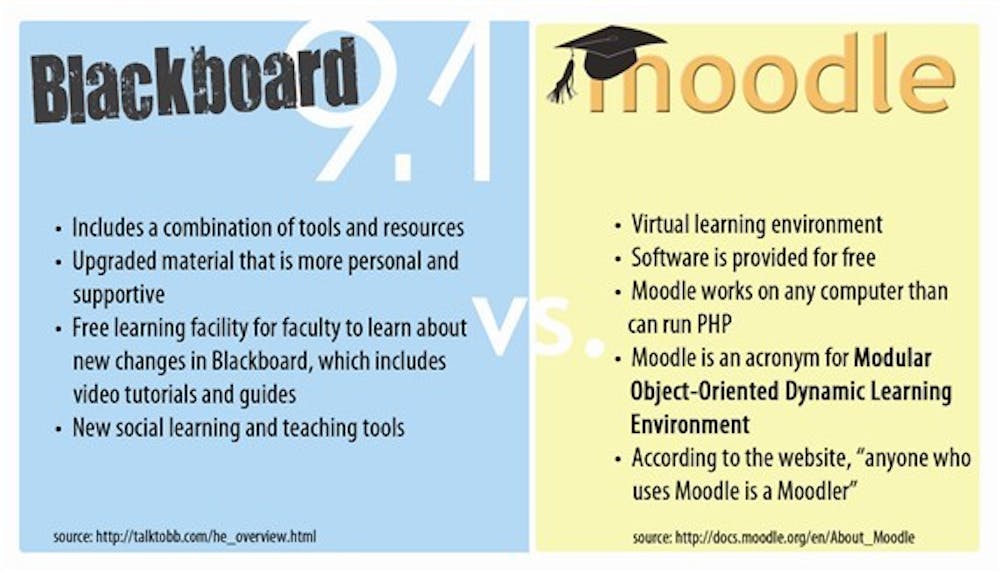A dependency on the Internet transcends generations on Elon’s campus. The transition to Moodle, a learning management system, provides faculty with a new set of online learning tools to utilize in their courses.
Starting in June, Blackboard will be a platform of the past, and the university will completely switch to Moodle.
“Moodle has allowed us to introduce faculty to the full capability of our instructional technologies to let them think about what they want to do in their course and then how to do that,” said Roger Gant, an academic support specialist.
The moving process has taken about two years, according to Gant. The switch has given Teaching and Learning Technologies a chance to have more focused training for faculty and staff, he said.
[quote]Moodle has allowed us to introduce faculty to the full capability of our instructional technologies to let them think about what they want to do in their course and then how to do that. -- Roger Gant, Academic Support Specialist [/quote]
Scott Hildebrand, assistant director of teaching and learning technologies training and development, said half the faculty have gone through training and the online faculty are currently learning as well.
Randy Piland, a senior communications lecturer, went to the very first Moodle training last summer. Now, Piland offers training as well, and his course is used as an example for other faculty members.
For his photojournalism classes, Piland introduced a Twitter feed on his Moodle page that was geared toward the course. He said he finds two or three things through Twitter that he can share in the class each week.
“It’s perfect for photojournalism,” Piland said. “If there are people you are following on Twitter, you have that right there. I follow about 20 people who are vital to the communications field so if students follow that, they can learn a lot.”
Piland said he tries to parallel a lot of the similarities between Blackboard and Moodle so faculty members do not feel like they have lost something.
“What I even encourage in some of the training I offer is for people to almost consider it a revamp,” he said. “People should really think about creating from new.”
Piland said he thinks the main challenge for faculty is familiarzing themselves with new editing tools. If members were to just sit down and tries to figure out Moodle, it would be difficult, he said, which is why he recommends the training sessions.
Faculty also expressed concern regarding students’ understanding of Moodle, Piland said.
“Do students need training? No,” he said. “If (professors) do it right and do it well, students will get it.”
Moodle’s functionality will rely on professors to take advantage of Moodle because it is a tool, and any tool is only as functional as the tool user, Gant said. Still, he said the feedback he has gotten so far has been positive.
“The feedback from faculty is that Moodle seems more intuitive, a simpler interface and an easier to use interface,” Gant said. “And if something is easier to use, it tends to be used more.”
Training will be available throughout the spring semester, Hildebrand said.
There are also walk in-trainings on Fridays for those who cannot make the scheduled sessions.


